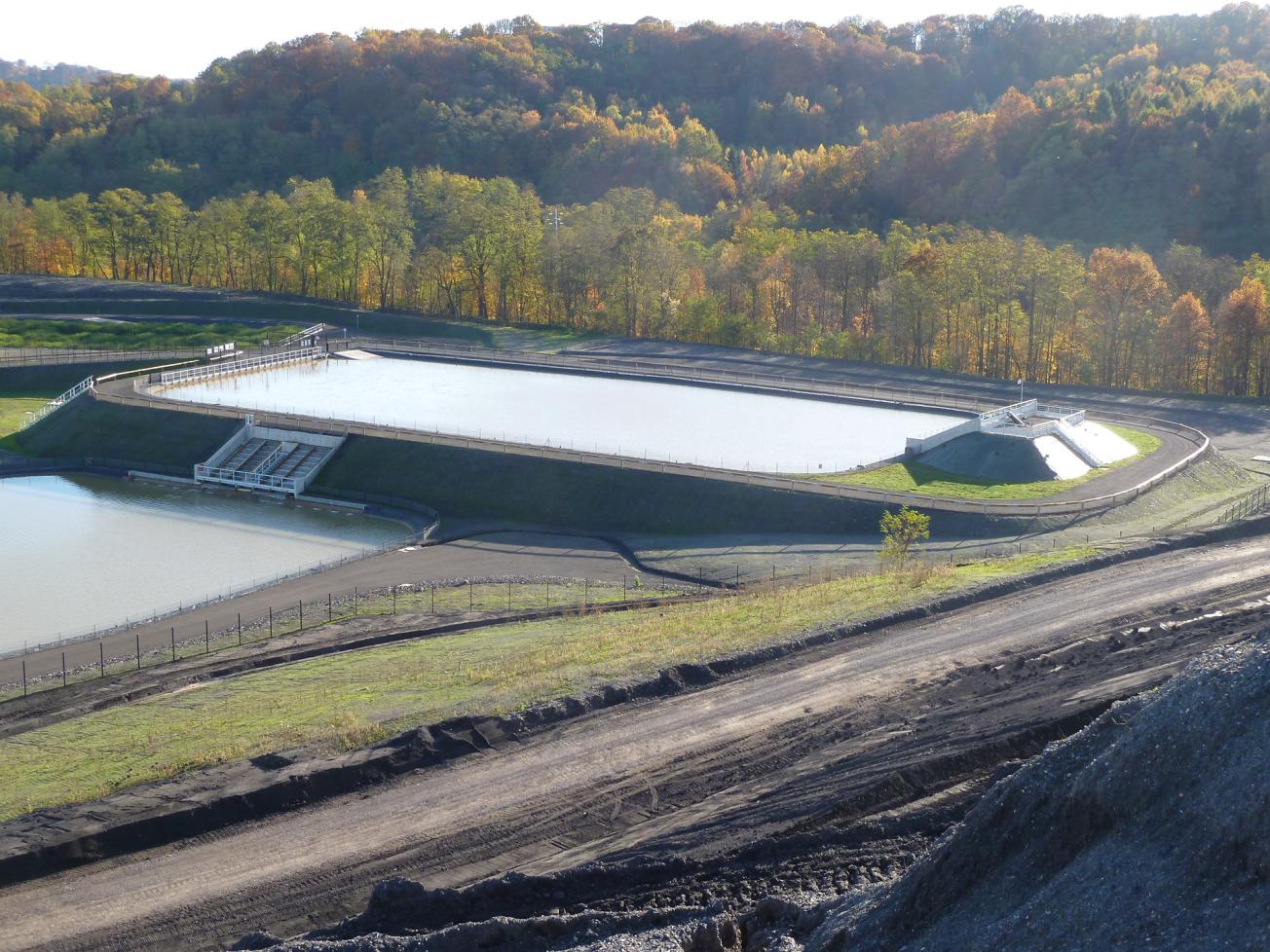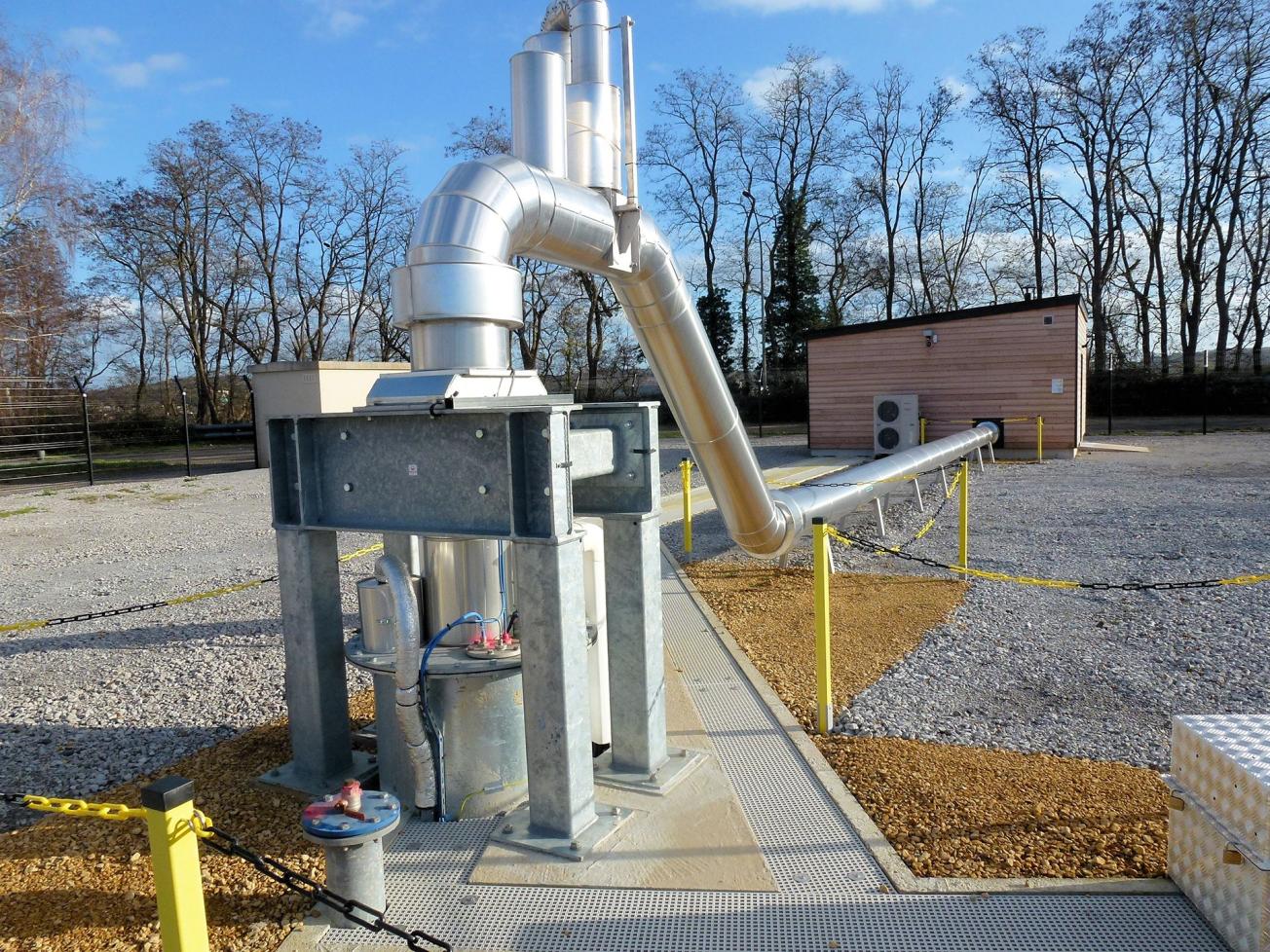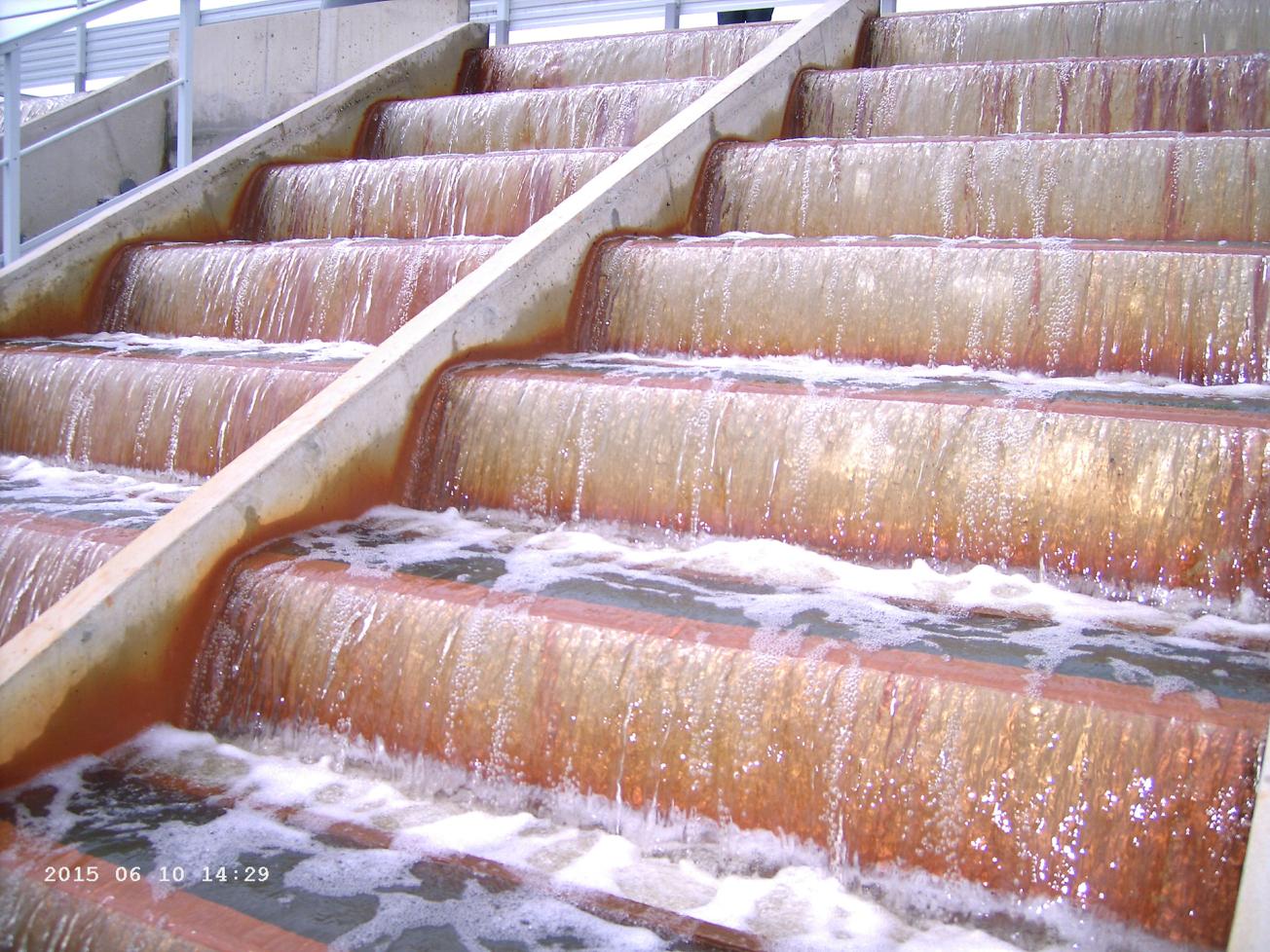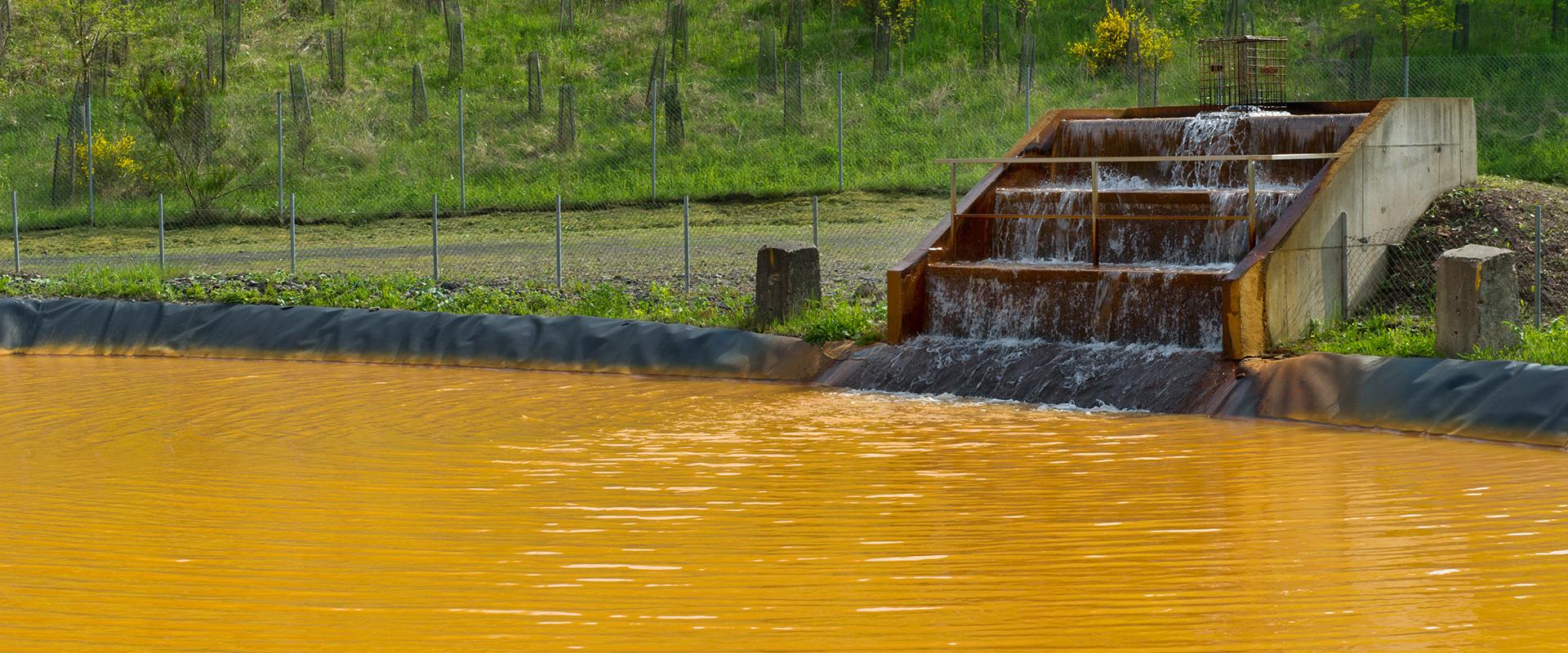
The settling ponds where iron oxides and suspended matter sink to the bottom.
© BRGM
For many years, the Vouters mine, which opened in 1855 in the municipality of Freyming-Merlebach in Moselle (E France), was one of the main coalmines in the Lorraine coal basin. The Vouters pit, the deepest in France at 1 327 metres, was active from 1962 to 2003. After its closure, safety work was completed in
2006 and the mine company continued to operate the plant pumping mine water from the central sector.
The Lower Triassic sandstone aquifer underlies the entire Lorraine basin, reaching down as far as the impermeable Permian formation beneath. The carboniferous formation from which the coal was extracted is older than the Permian layer, which was fractured during mining operations, causing water from the aquifer to filter through into the mine workings. The water was pumped continuously to the surface so that mining could continue. When the mine closed, pumping also ceased, leaving the water to flood the underground chambers.
An improved environmentally compatible passive treatment system
To maintain the quality of the groundwater, it therefore became necessary to infiltrate water "artificially" into the mine reservoir to prevent the formation of mineralised plumes in the water and to control its rise to the surface, which is endangering derelict facilities around the mine. The Vouters treatment plant is the third of its kind in the Lorraine coal basin. Its purpose is to treat the mine waters to reduce their iron and manganese concentrations before they are released into the environment. The plant uses an environmentally compatible passive treatment system.

A pumping station.
© BRGM
Cascade aeration, settling ponds and lagoons
The mine water pumped out of the reservoir is characterised by high concentrations of dissol- ved iron and manganese leaching out from iron pyrites. Iron and manganese are both water-soluble and precipitate after aeration, clouding the water with typically orange-coloured particles of iron hydroxide.
The treatment plant reduces these iron and manganese concentrations to the permitted statutory levels (1 mg/l for manganese and 2 mg/l for iron). The treatment process at Vouters is referred to as "passive", since the oxidised particles settle naturally as the water moves through the different stages.

Cascades with hollow steps that improve aeration and the precipitation of iron particles.
© BRGM
The mine water is first channelled down a series of four aeration cascades, which allow for flexibility in the operations.Studies by the post-mining unit for Eastern France (UTAM Est) have produced innovations in this area.
For example, the cascades have hollow steps to improve aeration and reduce turbulence. The water then flows into settling tanks where the iron hydroxide and other suspended matter fall to the bottom. The mine water, with a much reduced iron concentration, is then channelled into lagoons. These are planted with reeds whose extensive root systems complete the passive treatment process by filtration and oxidisation. By using broad nozzles, the water is evenly sprayed across the surface of the tanks and lagoons, which improves the settling process. After about two days of passive treatment, the purified water can be released into the environment, after tests for quality and quantity at the lagoon outlets.
Results are very promising and the plant is now treating the mine water at a rate of 200 m3/h, which will increase to 500 m3/h in future. Treatment efficiency is fully in line with expectations. New features are in place to guarantee safety during the periodic sampling and maintenance operations undertaken by the plant managers.







